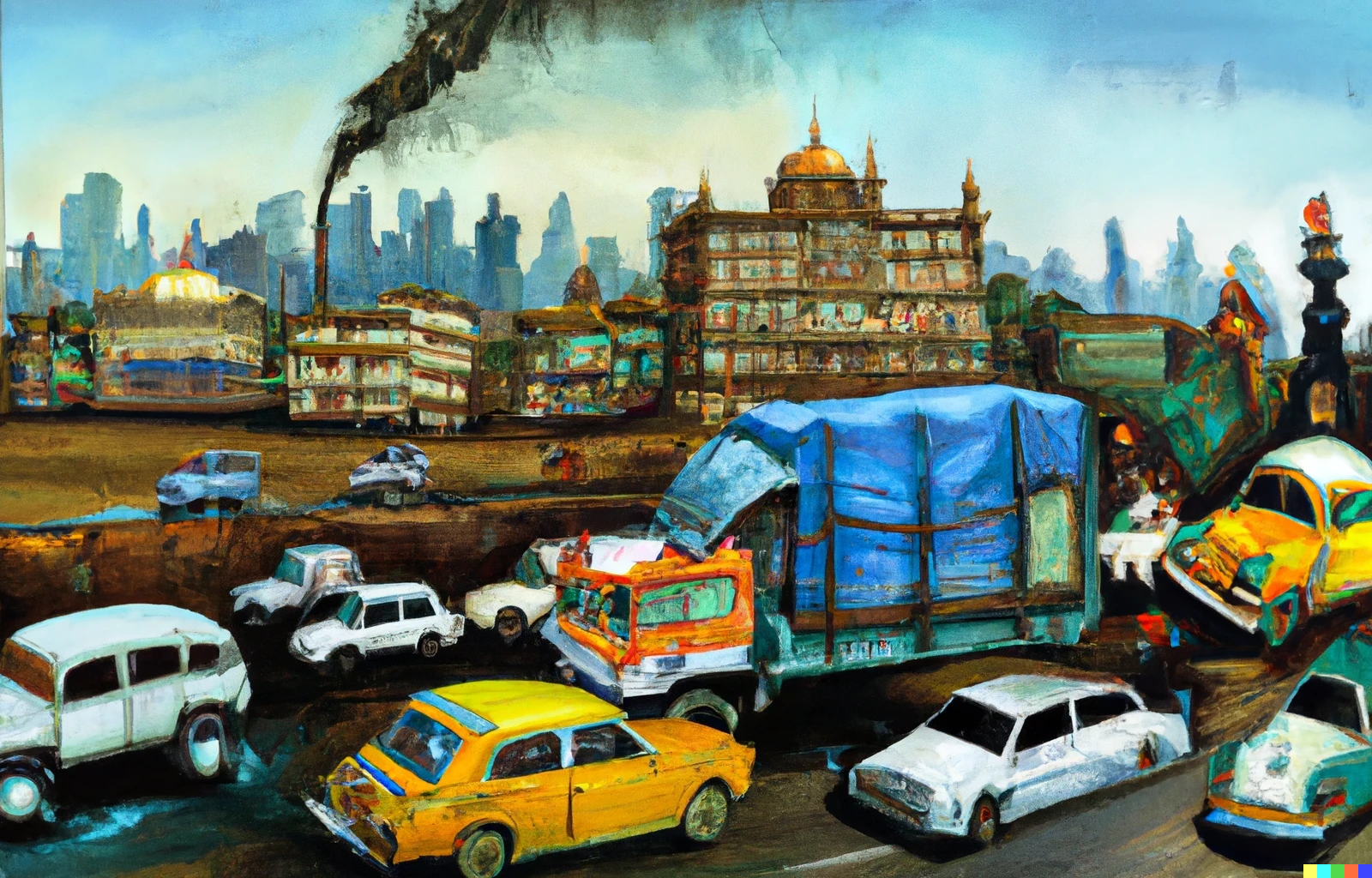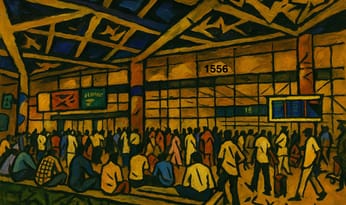
2.7 - The Least Polluted City in the World
Trying to get Mumbai to be less polluted
Background: This was published in January 2000, a few days after a taxi strike.
I woke up confused, trying to recollect fragments of a dream/nightmare. This is what I was able to piece together.
It is the year 2010. Mumbai has been given the "The Least Polluted City in the World" award by Greenpeace. I am a journalist interviewing the mayor of Mumbai.
I: Congratulations, Mr. Mayor. This is a big achievement.
M: Thank you. As you know, this is not just my effort, but the end result of many years of hard work.
I: You are too modest. Can we go through the sequence of events which made this possible?
M: I guess the nidus was laid by the taxi strike that occurred in the first week of January, 2000, to protest against the anti-pollution measures of Mr. V M Lal, the then transport commissioner and the high court. This strike dragged on for about four months. During the strike, with taxis and trucks off the roads, most Mumbaiites realized how much cleaner the air could get. Pollution was down by more than 25%.
I: But weren't the common people affected by the strike?
M: They bore it. Sure, people were packed in the buses and trains and had to share cars but they managed. Anyway, four months later, a faction of the taxi-drivers' union broke away and decided to agree to the transport commissioner's directives. Eventually the entire union fell in line. This meant that over 10,000 of the 50,000 taxis on the road, were either scrapped or refitted with compressed natural gas engines. The government became stricter and issued directives according to which, by the end of 2001, all cars, taxis and trucks had to be EURO-II compliant.
I: But this affected taxis and car owners both.
M: Exactly. Though there was some hue and cry, most people had tasted clean air long enough, not to want it forever. The main protests came from those who owned old Fiats, Ambassadors and Marutis, but their voices were drowned out. The taxi drivers thought of striking again, but the four months strike had left many of them in severe debt and the backbone of their association had been effectively broken.
I: And the trucks and transport?
M: Trucks were banned from city limits during the day starting Jan 01, 2004. All trucks carrying fruits and vegetables had to unload them in Navi Mumbai and transport them into the city using local trains. For all other materials, trucks were allowed into the city only between 12.00PM and 5.00AM. This helped reduce pollution by a further 20%.
I: And then the severe car rules were brought in.
M: Correct! We brought in an elaborate system of rules and regulations regarding the usage of cars. Single passenger cars were allowed into the city centre (Parel and Worli to Nariman Point) from 9.00AM-7.00PM only if they paid Rs 5000 per month. Two passenger cars had to pay Rs 2500 and only three passenger cars were free. This encouraged car-pooling and the use of public transport. The usage of taxis as alternatives was also discouraged using similar regulations. Before these rules came into existence in 2006 however, we first strengthened our public transport system, which is now the best in the world.
I: The Metro was the first.
M: Correct. In 2002, with the help of the World Bank, we initiated the Metro system, which runs overground through the centre of all the main roads, from Nariman Point to Dahisar in the West and Thane in the east. These trains as you know, run in both directions, the traditional North-South as well as the East-West. Today, the maximum wait for a train is 5 minutes and the longest it takes to get anywhere within city limits, is 30 minutes. And the trains are always on time. Also, the Metro is much cheaper to use as compared to individual cars and the increased frequency and accurate timing have eliminated overcrowding; as a result many people have switched from driving their own cars to using the Metro. The existing suburban rail system was also ramped up once the Metro began, and now serves as an alternate, slower system, especially for those who live beyond Dahisar and Thane. It also serves to transport goods into the city from Navi Mumbai and other places outside city limits.
I: And the buses?
M: Thank you for reminding me. All the existing BEST buses were gradually upgraded and from 2007 onwards, we have had only fast, air-conditioned buses with special bus lanes on all the main roads. Again they are much cheaper and faster to use than personal cars.
I: And this had an impact on taxis.
M: With the advent of the Metro and the upgrading of our suburban railway system and buses, the need to use taxis and auto-rickshaws went down significantly. The government initially had thought of restricting licenses, but then it decided to let the market handle the situation on its own. When the demand for taxis went down, the supply had to go down and most taxi-drivers gave up their taxis and went into other professions. We did have a retraining program in 2007, where many of them were absorbed into the public transport system, provided they had been driving taxis for at least 15 years. Now as you know, taxis are available only if you call for them through a centralized calling service.
I: This is a momentous achievement.
M: To commemorate this award, we have set up a transport museum next to the Prince of Wales Museum, describing in detail the way in which this was achieved. We are a role model for the rest of the World and we have taken this opportunity to document our methods.
Suddenly someone shouted, "The taxi strike has ended today after four days." And I woke up!
Addendum: Obviously all of this remains a pipe-dream. 2010 has come and gone and hardly any of this has materialized. We learnt how clean the air could be during the Covid-19 induced lockdown in April and May 2020. The metro work is now in full-swing and hopefully in 3-4 years, we will have a functioning metro that may make a difference.
Bhavin's Writings Newsletter
Join the newsletter to receive the latest updates in your inbox.


